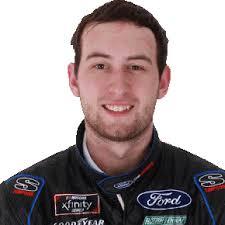
CHARLOTTE, N.C. – Chase Briscoe enters the Coca-Cola 600 Sunday at Charlotte (N.C.) Motor Speedway with the momentum any driver wants heading into the longest race on the NASCAR Cup Series schedule.
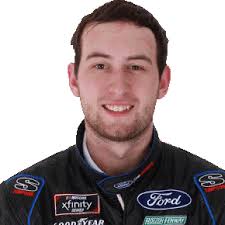
The driver of the No. 14 Mahindra Compact Tractors Ford Mustang Dark Horse for Stewart-Haas Racing finished an impressive fifth in the series’ prior points-paying race on May 12 at Darlington (S.C.) Raceway. It was his best finish in the 13 races run this season and his first top-five in seven career Cup Series starts at Darlington. The fifth-place drive was the 11th top-five of Briscoe’s Cup Series career, a mark highlighted by his March 2022 win at Phoenix Raceway.
The Coca-Cola 600 will mark Briscoe’s fourth career NASCAR Cup Series start at Charlotte’s 1.5-mile oval. His best result came in the 2022 Coca-Cola 600 when Briscoe started 15th and worked his way into the lead on lap 260 before finishing fourth.
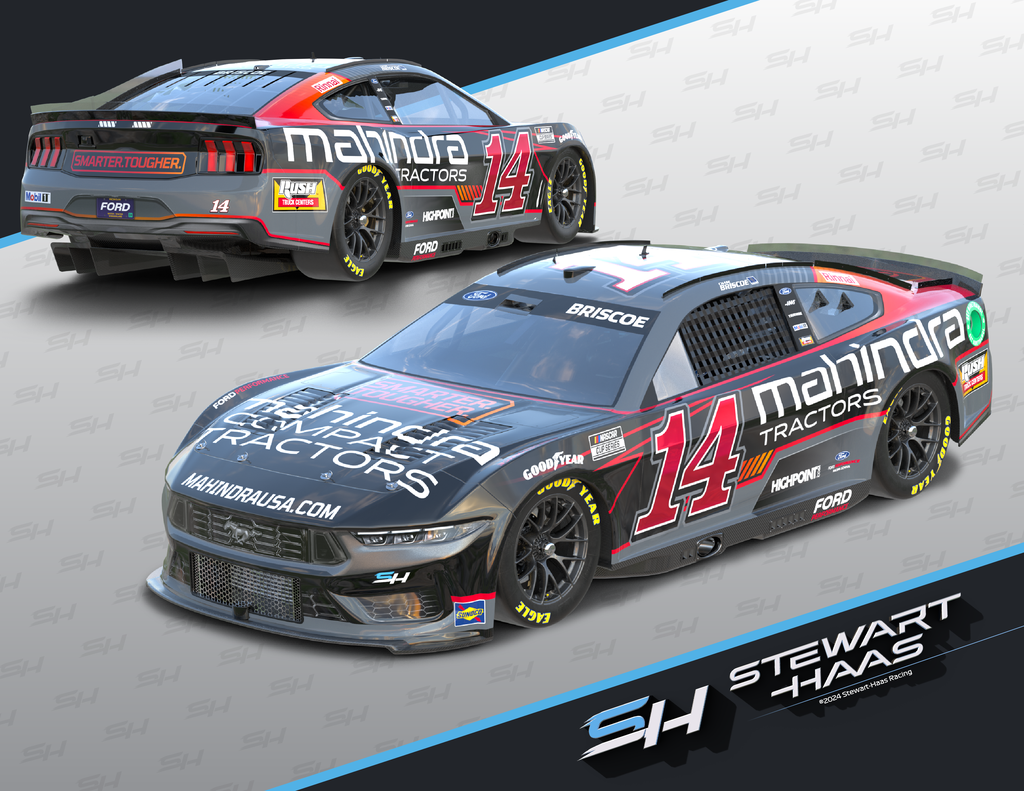
Briscoe has made four NASCAR Xfinity Series starts at Charlotte, with his best result coming in his most recent drive at the intermediate-style track – sixth in May 2021. It was a bittersweet run as Briscoe qualified his Ford Mustang second and led three times for 60 laps. However, as eventual race-winner Ty Gibbs muscled past Briscoe on lap 181, Gibbs’ No. 54 machine took the air off Briscoe’s spoiler, sending Briscoe into a spin. That Briscoe recovered in the race’s final seven laps to finish sixth was a testament to his strength that day.
Before Briscoe turned a lap at Charlotte in a NASCAR Xfinity Series car, he raced at the D-shaped oval in the NASCAR Craftsman Truck Series. Driving a Ford F-150, Briscoe started second and finished 11th in May 2017. It was his first and only Truck Series race at Charlotte.
As part of #NASCARSalutes and the 600 Miles of Remembrance initiative during the Coca-Cola 600, the No. 14 Mahindra Compact Tractors team is honoring United States Marine Corps Corporal David W. Smith.
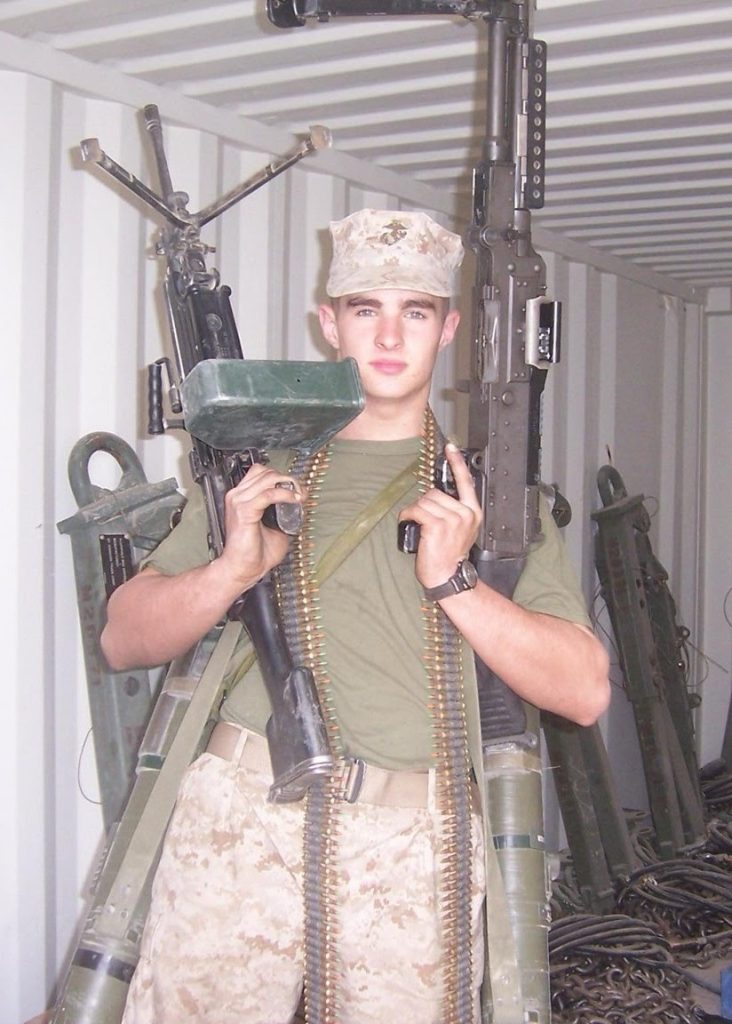
A native of Garden City, Michigan, Smith graduated high school in May 2003 and enlisted in the Marine Corps four months later. Smith completed his recruit training at Parris Island, South Carolina, Camp Lejeune in Jacksonville, North Carolina, and Fort Leonard Wood in Missouri, after which he was promoted to Private First Class on May 1, 2004. Smith reported to Okinawa, Japan, and was assigned to Motor Transport Company, 3rd Transportation Support Battalion, 3rd Marine Logistics Group as a motor vehicle operator. He was deployed to Iraq from September 2004 through March 2005 and was promoted to Lance Corporal on Jan. 1, 2005.
Smith returned to Okinawa and, in less than a year, was promoted to Corporal on Dec. 1, 2005. It was shortly after that, on Dec. 11, 2005, that tragedy struck, and the 20-year-old Smith faced his untimely death when a seven-ton MTVR (Medium Tactical Vehicle Replacement), towing another MTVR, overturned during a training exercise at Camp Fuji in Japan.
Throughout his childhood, adolescence, and adulthood, Smith continuously impressed, commanded respect and was loved by everyone with whom he crossed paths—family, neighbors, peers, teachers, principals, coaches, pack leaders, preachers, employers, strangers,, and his fellow brothers and sisters in arms among all U.S. military branches and all ranks.
Smith filled his free time with cars, sports, music, family, and friends, telling jokes, pulling pranks, video games, more cars, and using his magic touch to fix anything someone else deemed unfixable. Smith lived life to the fullest with a genuine, full, and incredibly contagious laugh. He looked eye to eye confidently in any challenge, obstacle, threat, or fear he encountered.
Before the Coca-Cola 600 goes green, two of motorsports’ biggest races occur earlier in the day – the Monaco Grand Prix and the Indianapolis 500.
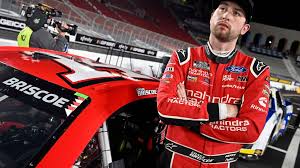
“I’ll typically turn on Monaco at some point, and I’ll catch a couple of laps, but not a whole lot,” said Chase Briscoe. “I’m normally watching as much Indy 500 coverage as I can, including prerace. But at some point, I’ve got to step away from it. I’m normally doing meet-and-greets right when the Indy 500 is coming to an end, and I feel like during those meet-and-greets I’m kind of in La La Land because my mind’s on the Indy 500. Just growing up in Indiana, that race means a lot. I always watch almost every single practice session and definitely qualify, and the race is just a super big deal. It’s something I grew up doing. I remember watching with my family every Indianapolis 500, so that’s something I really enjoy doing.”
Memorial Day weekend is a big weekend for auto racing between Monaco, Indy, and Charlotte.
“Growing up in a racing family certainly sparked that interest from the get-go,” said Briscoe. “I just didn’t know any differently. I thought when I was 3 or 4 years old that everybody just did the same thing that I did, right? I just didn’t know anything different. I’d go to the racetrack on the weekend, and during the week, I’d go to the race shop and play around racecars and stuff like that. It was just normal for me. Looking back, it’s definitely not normal for very many people, but I kind of see it the same now with my son, Brooks. I don’t push racing on him at all, but he’s just naturally growing up around it. He loves playing with racecars and being around racecars, and that’s all he really talks about. He wants to watch the movie ‘Cars,’ or watch racing, and I don’t ask him, ‘Hey, you want to watch a race?’ He just wants to do it. It’s kind of the same for him. When you grow up around it, it becomes something you want to do and look forward to, and for me, growing up in a racing family was certainly that for me.”
Kyle Larson is doing the Double – running the Indy 500 and Coca-Cola 600 on the same day.
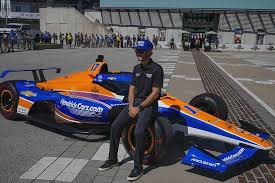
“I’m really excited for Kyle. I know it’s something that he’s wanted to do for a really, really long time,” added Briscoe. “I’m excited from the NASCAR side, but more excited from the sprint car side to see another sprint-car guy go to the Indianapolis 500. It’s kind of the origins of Indy. You had these sprint car guys who would go and run, you had A.J. Foyt, Parnelli Jones, Jack Hewitt, Bryan Clauson recently, and that was always the thing, if you were the best sprint car guy, you wanted to run the Indy 500, that was the dream. So it’s cool from that standpoint. Truthfully, I’ve never had the desire to run the Indy 500. I appreciate it so much as a fan, and I really don’t want to thrash at 240 miles an hour. I know I’m not going to put myself in those situations, so I’ve never really had that desire to go do it. But I will say seeing Kyle do it and talking to him about it and, honestly, hearing how similar he feels like it is to our Cup cars as far as how they drive, and the Indy stuff has gotten way safer over the last couple of years, so it very, very, very briefly piqued my interest. During the month of May, I typically get a ton of questions about running the Double, just being from Indiana. I always tell people I would like to just start and park the Indy 500, like I want to go through the prerace ceremonies, I want to do ‘Back Home Again in Indiana,’ do the pace laps, take the green flag and then just bring her down pit road and watch the rest of the race. I don’t think that’s ever going to be a possibility – I’m not going to say it’ll never happen, but I would say it’s a very slim chance, and slim’s probably left town or getting close to leaving town. But it’ll be cool to watch Kyle and I’ll certainly be pulling for him, and hopefully for the sprint car guys he can do it.”
The only person to complete all 1,100 miles between the Indy 500 and the Coca-Cola 600 on a single day is Tony Stewart.
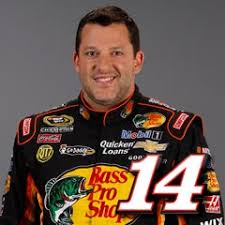
“Truthfully, I don’t remember a ton of it just because I was a lot younger and really didn’t understand what was going on with guys running the Double and what that meant. I do remember watching the Coke 600 and seeing him try to get there in time and all that. I remember that part of it, but I don’t remember any of him running the Indy 500. At that point, I didn’t watch any IndyCar races outside of the Indy 500, so I didn’t really know any of the drivers, whereas in NASCAR, I knew every single guy. It’s definitely crazy to think he’s completed all 1,100 miles and just what that day would be like. Even hearing him talk about it, just the difference in how he was physically the first year to the second year, shows just how much Tony loves racing. It’s pretty cool that he’s the only guy who’s done that. I don’t know if that record will stand at the end of this year, but it’s been pretty cool for Tony to do the Double not only once but twice and to do it really successfully.”
Much is made about the Coca-Cola 600 being the series’ longest race. Because the race is so long, can it be good that if you’re not where you want to be, you have time to make things right? Or is the other side of the coin being that it’s too long of a race not to be good, as the delta to being off can quickly become insurmountable?
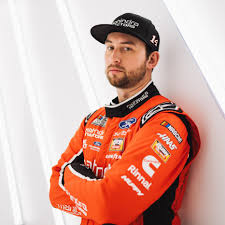
“It can definitely be both, just depending on how far off you are,” added Briscoe. “That’s a race where your car definitely goes through a lot of transitions. Last year we were way off, and it was hard to ever get back. You go back to 2022, I wasn’t great in the beginning part of the race, but then nighttime came and I kind of started creeping up. I probably should’ve won the 2022 Coke 600 and thrown it away with three or four to go. It was one of those races where, at the beginning of the race, I definitely didn’t think I was going to be in the mix, and that transition happens when the sun goes down, and some guys’ cars come to life and other guys’ kind of fall apart. Ours certainly came to life. It’s a long race. It’s one of those races where a lot of guys just eliminate themselves, whether it’s pit-road mistakes or just putting yourself in bad spots early in the race. I feel like, typically, the longer races kind of suit my style a little bit more. I feel like throughout my career, I’ve always run better in the longer races, and the Coke 600 is obviously a long, long race. Hopefully, this year, we can kind of makeup for that mistake I made in 2022.”
The Coca-Cola 600 used to push drivers and their cars to the limit, as attrition was once a key factor. But today, drivers are fitter than ever, and cars seem to be built better than ever before. Is that extra 100 miles noticeable anymore, be it from your perspective behind the wheel or your team’s when building your racecar?
“From a performance standpoint, I don’t really notice the extra 100 miles,” said Briscoe. “Now, the first 100 laps of that race does feel like it takes forever. It’s one of those deals where in that race we have that extra stage, you get done with Stage 1, and you’ve got 100 laps down, and you have 300 laps to go, and it’s like, ‘Man, how am I going to make it?’ It’s just super long, and I think some of the reason it feels so long is that you start that first stage in the daylight, and that first stage is when that transition is typically from day to night, and it just feels like it takes two or three hours for that transition to happen, and in the car you just don’t realize how fast it happens. You get to halfway, I feel like the final 200 laps go fairly quickly, but that first 200 laps there, it definitely takes a long time. But from a performance standpoint, this car definitely seems to take it.”
The Coca-Cola 600 is considered one of NASCAR’s crown jewels because it is the only 600-mile race on the schedule. But in this short-attention-span era, is a 600-mile race still needed?
“Yeah, I think so. I think it’s different than every other race that we have,” Briscoe said. “I feel like all of our other races are fairly similar. If the Coke 600 were a 400- or 500-mile race on a mile-and-a-half, it probably wouldn’t be as special. I think even with it being on Memorial Day weekend, if it wasn’t 600 miles, that’s what makes that race unique. In the past, it was more of a battle for the machine than what it probably is now, but it’s still different. It’s different from any other race we have all year long. And because it’s different, it makes it significant, and obviously with it being on Memorial Day weekend, with how much racing goes on that day, it’s always been a crown jewel. I don’t think you can change a crown jewel and have the same significance. Look at the Brickyard 400. When it went from the oval to the road course, it wasn’t a crown jewel anymore. Now that we’re going back to the oval, it’s a crown jewel instantly again. I feel like it’d be the same if you took any mileage off the Coke 600.”
Mahindra Ag North America is in its third year as the anchor sponsor for Briscoe and the No. 14 team after extending its partnership with Stewart-Haas during the offseason. The multi-year agreement with the NASCAR team co-owned by NASCAR Hall of Famer Tony Stewart and industrialist Gene Haas continues to feature Mahindra Tractors, a brand of Mahindra Ag North America, on Briscoe’s No. 14 Ford Mustang for the majority of the NASCAR Cup Series schedule. Houston-based Mahindra Ag North America is part of Mahindra Group’s Automotive and Farm Sector, the No. 1-selling farm tractor company in the world, based on volumes across all company brands. Mahindra offers a range of tractor models from 20-75 horsepower, implements, and the ROXOR heavy-duty UTV. Mahindra farm equipment is engineered to be easy to operate by first-time tractors or side-by-side owners and heavy duty to tackle the tough jobs of rural living, farming, and ranching. Steel-framed Mahindra Tractors and side-by-sides are ideal for customers who demand performance, reliability, and comfort. Mahindra dealers are independent, family-owned businesses located throughout the U.S. and Canada.
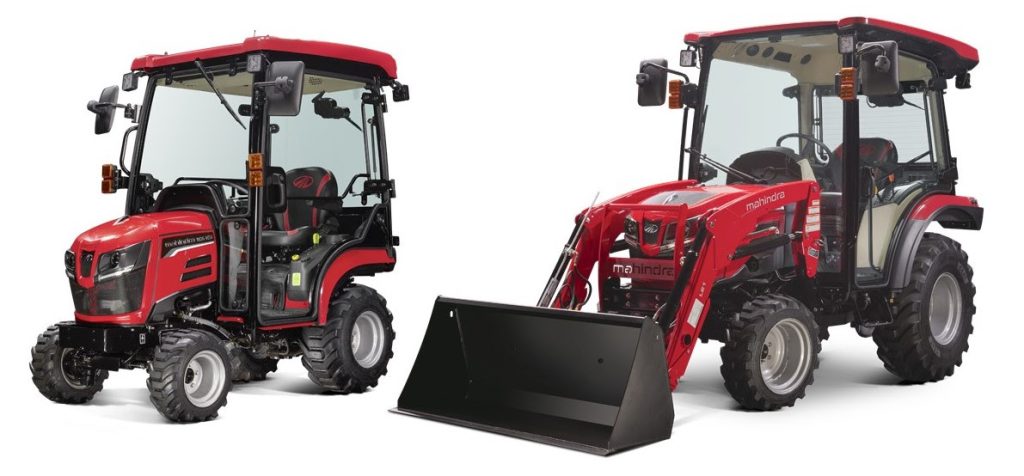
Mahindra Ag North America uses the Coca-Cola 600 to promote its newest sub-compact and compact tractors. From a new paint scheme on Briscoe’s No. 14 Ford Mustang Dark Horse to a display on the midway at Charlotte Motor Speedway, Mahindra is showcasing its 1100 and 2100 tractors, designed with features to enhance operation for first-time buyers. Boasting comfort amenities like telematics, leather seats, and USB charging ports, the Mahindra 1100 and 2100 models are designed around ease of use for acreage owners, farmers, and ranchers, with features like a push-button PTO and side-by-side HST pedals. Other features include a hand throttle on the console, tilt, and telescopic steering, implement quick raise and lower, and auto lift at three points while turning and backing. Every 1100 and 2100 series model is available in open station or cab configurations, with an HVAC system exclusive to the 2126. This compact line has compatible Mahindra attachments, including loaders, backhoes, mowers, snowblowers, post hole diggers and grapples. The loader on the 1100 series has a max lift of 770 pounds, while the 2100 has a max lift of 1,760 pounds. Both can be seen this weekend at Charlotte.


